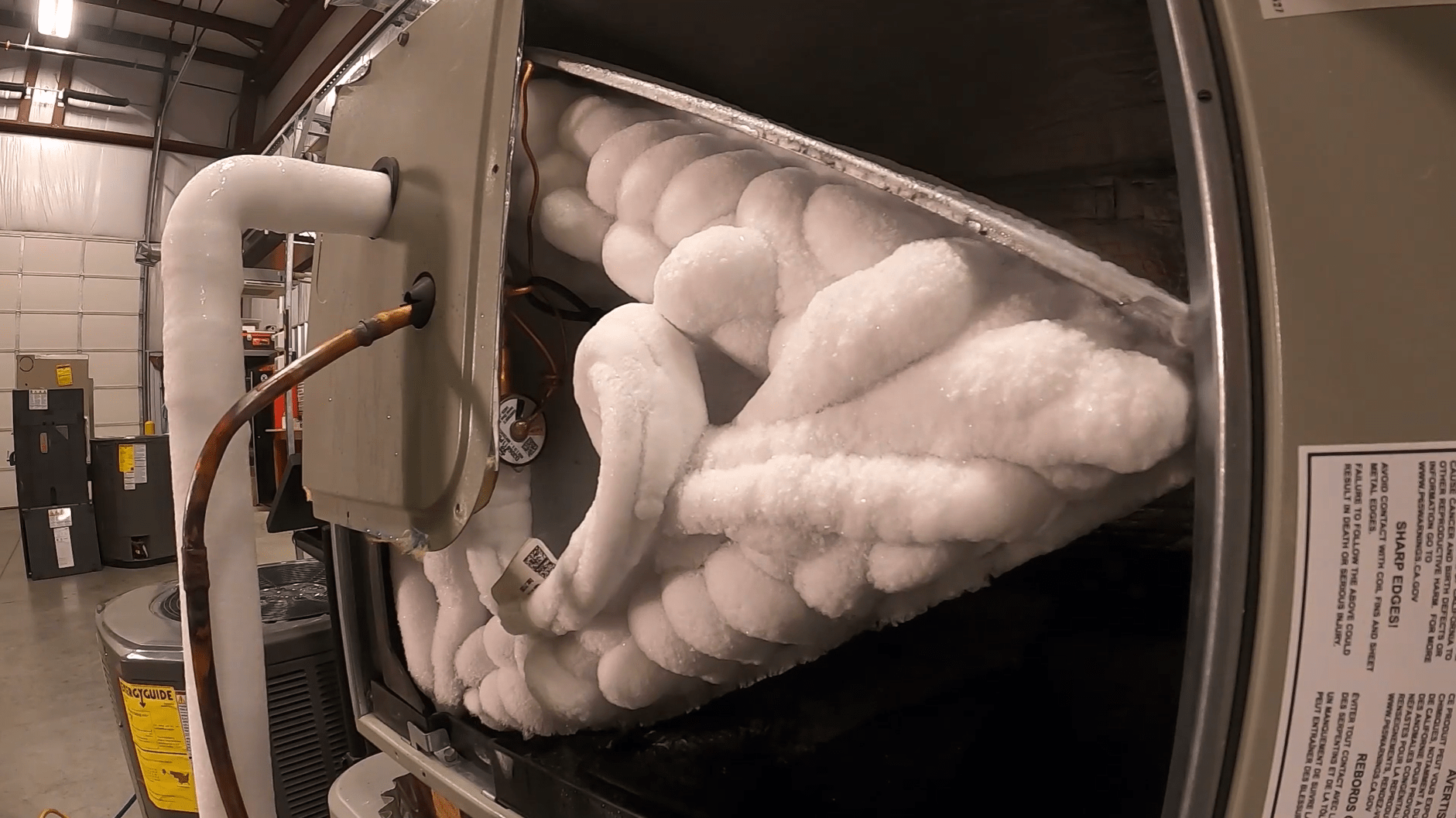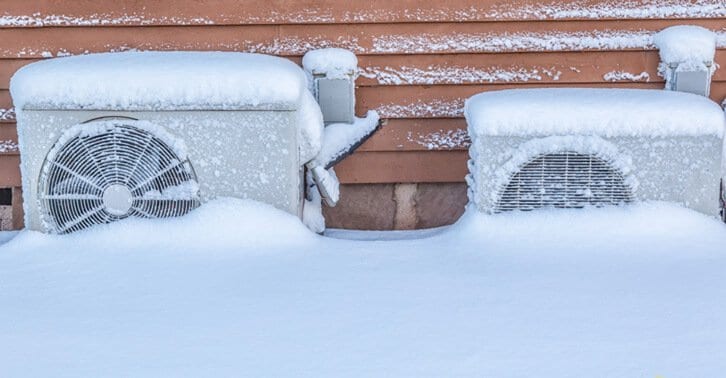What are your opinions regarding What Do I Do If My AC Pipe Is Frozen?

Introduction
Discovering that your air conditioning pipe is frozen can be worrying, especially throughout hot summer season when you rely upon your air conditioning system the most. Comprehending what to do in such a situation is essential to prevent more damage to your cooling system and guarantee your convenience inside your home.
Understanding the Causes
Numerous aspects can add to the freezing of an AC pipe. Recognizing these causes can assist you resolve the concern successfully.
Lack of Airflow
One common cause of a frozen AC pipe is inadequate airflow. When the airflow over the evaporator coil is limited, it can trigger the coil to go down below freezing temperature level, bring about ice development on the pipe.
Low Refrigerant Levels
Insufficient cooling agent degrees in your air conditioning system can also lead to a frozen pipe. Reduced refrigerant degrees can create the pressure in the system to drop, bring about the cold of dampness on the evaporator coil.
Winter Conditions
In cooler climates, freezing temperature levels outside can add to the cold of air conditioner pipelines. If your air conditioning device is not effectively protected or if there are leaks in the ductwork, chilly air can infiltrate the system, causing the pipeline to ice up.
Dirty Air Filters
Filthy or clogged air filters can limit air movement in your a/c system, bring about various concerns, consisting of a frozen pipeline. It's necessary to replace or clean your air filters consistently to guarantee correct air movement and stop ice buildup.
Indicators of a Frozen Air Conditioning Pipe
Acknowledging the indicators of a frozen a/c pipeline is essential for timely action.
Reduced Airflow
If you observe a substantial decline in airflow from your vents, it could indicate an icy pipeline.
Ice Buildup on the Pipe
Visible ice build-up on the refrigerant line or the evaporator coil is a clear indicator of an icy AC pipe.
Odd Sounds from the Unit
Uncommon audios, such as hissing or bubbling, originating from your air conditioner system can signify that there's ice present on the pipeline.
Immediate Actions to Take
When faced with an icy air conditioner pipeline, it's vital to act quickly to stop additional damage to your air conditioning system.
Turning off the a/c
The very first step is to turn off your air conditioning system to stop the system from running and exacerbating the issue.
Checking for Blockages
Examine the area around the indoor unit for any type of blockages that might be obstructing air flow, such as furniture or curtains.
Thawing the Pipe
You can utilize gentle methods like placing towels soaked in warm water around the frozen pipe to help thaw it gradually.
Safety nets
Taking safety nets can aid prevent future incidents of a frozen a/c pipeline.
Routine Maintenance Checks
Schedule regular upkeep checks with a specialist HVAC professional to make certain that your air conditioner system is running effectively.
Transforming Air Filters
Consistently change or clean your air filters to prevent airflow constraints and keep ideal performance.
Shielding Exposed Pipes
If your air conditioner pipelines are subjected to cold temperatures, take into consideration protecting them to prevent cold throughout winter season.
Seeking Professional Help
If DIY approaches fall short to fix the issue or if you're unsure concerning exactly how to proceed, it's ideal to seek aid from a certified HVAC specialist.
When DIY Methods Fail
If your efforts to thaw the pipeline or address other concerns are not successful, it's time to hire a specialist.
Value of Hiring a Professional HVAC Technician
A certified HVAC professional has the know-how and tools essential to detect and repair concerns with your air conditioning system securely and efficiently.
Verdict
Taking care of an icy a/c pipeline can be a discouraging experience, however recognizing how to react can help lessen damage and bring back convenience to your home. By understanding the reasons, recognizing the indications, and taking prompt activity, you can effectively attend to the concern and avoid future events.
G UP? HOW TO FIX IT?
It happens all over America. And the rest of the world probably. It’s the hottest day ever and for some darn reason your AC isn’t cooling the house. You fiddle with the thermostat to try and fix the problem. Nada. All you can do now is go outside and check the AC unit. You make your way there and find your air conditioner unit is frozen! But how?
In this post we’ll cover how you can tell that your air conditioner has frozen (other than the obvious reasons), what could have caused the freeze, and some of the things you can do about your AC freezing up. And if you have a frozen heat pump condenser, read our blog about it to learn what to do! But remember, it is always best to avoid your AC freezing up with an AC tune up. And if you are moving into a home, it's critical to get HVAC inspection so that you are aware of an AC problems before you move in.
Keep reading and you may be able to fix the frozen AC yourself. If you can’t, call an HVAC specialist. If you live in Maryland, call SuperTech HVAC for AC repair. We’ll take care of it.
How Does An Air Conditioning Unit Work?
How you probably imagine an AC works is wrong. Contrary to popular belief, an AC system does not inject cool air into a building. Instead, it removes the heat from inside and transfers it outside. Cool huh? (Pun intended).There are 4 major components among the 3 stations of an air conditioning system: the evaporator coil, the compressor, the condenser, and the refrigerant – a special chemical that links everything together through a closed loop system.
Station 1:
Warm indoor air is sucked into the return vent, through a filter, and blows over the evaporator coil. The heat is absorbed into the cold refrigerant, turning it from liquid to gas. The air, which is now cool, is blown back into the home to areas that your thermostat, i.e. you, has decided.
Station 2:
The refrigerant makes its way outside the house to the compressor, which squeezes the warm refrigerant, raising its gaseous temperature even more.
Station 3:
When the super hot vapor refrigerant reaches the condenser, the last step, the heat is expelled and absorbed into the outdoor air. The refrigerant instantly cools, which changes it from gas back to liquid form. The cold liquid refrigerant is now ready to return to station 1 and repeat the process.
Is Your AC Freezing Up? Here Are The Signs:
As you may have guessed, your air conditioner unit freezing up on a hot day is not normal.
If this happens, there's no need to panic. Often the issue can be solved with a little troubleshooting. If the AC unit is left frozen for too long however, you may find yourself with a bigger problem.
First things first, how do you know your AC is frozen?
Well, the obvious sign is the ice on your refrigerant line-set pipe. Simply check between your outdoor AC unit and your home's exterior wall to see whether your AC line frozen.
You might also have a frozen evaporator coil. This one's not as easy to check. You'll need to open a panel on the indoor unit to inspect. Don't do this unless you're handy. If you aren't, call an HVAC pro like SuperTech HVAC or you may damage something in the process.

I was guided to that write-up about How can I fix an air conditioner’s frozen pipe? from someone on another web blog. Enjoyed reading our entry? Please share it. Help other people locate it. Bless you for your time. Don't forget to come visit our site back soon.
Call Today